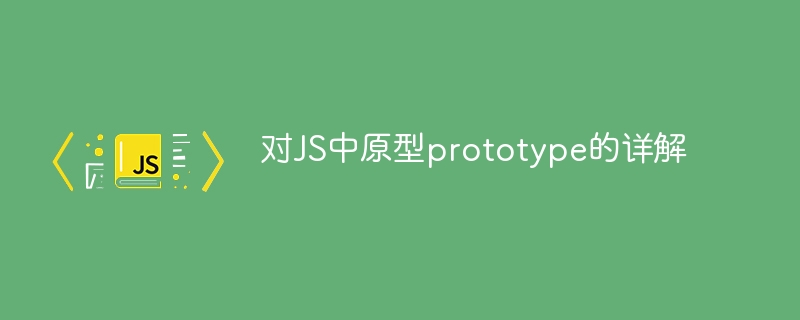

Detailed explanation of prototype prototype in JS
JavaScript is a programming language based on prototype, and one of its core concepts is prototype. Prototype is an important concept in JavaScript, which is the basis for object inheritance.
In JavaScript, every object has a prototype. The prototype of an object is an object that contains a set of properties and methods. We can define properties and methods in the prototype, and then all objects created based on this prototype will inherit these properties and methods.
Every function in JavaScript has a prototype attribute, which points to an object. When we use the keyword new to create an instance of a function, the instance inherits the properties and methods in the prototype.
Below we explain the concept of prototype through a specific code example.
function Person(name, age) {
this.name = name;
this.age = age;
}
Person.prototype.sayHello = function() {
console.log("Hello, my name is " + this.name);
}
var person1 = new Person("Tom", 20);
var person2 = new Person("Jerry", 25);
person1.sayHello(); // 输出: Hello, my name is Tom
person2.sayHello(); // 输出: Hello, my name is JerryIn the above code, we first define a constructor function Person, which accepts two parameters name and age, and assigns these parameters to the name and age attributes of the instance during the instantiation process.
Then, we define the method shared by the instance object by adding a method sayHello to the Person prototype. This method can be called on instance objects.
Finally, we used the keyword new to create two Person instances, person1 and person2, and called the sayHello method of the instance object respectively, outputting different results.
The advantage of prototype is that it can provide a very efficient property and method inheritance mechanism. If we define the same methods in every object, these methods will repeatedly occupy a lot of memory space. By using prototypes, we can define these methods in the prototype, thereby realizing method sharing and reducing memory overhead.
In addition to inheriting and sharing methods, prototypes can also be used to add and modify the properties and methods of an object. By modifying the prototype, we can dynamically add new properties and methods to the object.
Let’s look at another example:
function Person(name, age) {
this.name = name;
this.age = age;
}
var person = new Person("Tom", 20);
console.log(person.sayHello); // 输出: undefined
Person.prototype.sayHello = function() {
console.log("Hello, my name is " + this.name);
}
person.sayHello(); // 输出: Hello, my name is TomIn the above code, we try to access the sayHello method of the instance object before creating the instance person, and the result is undefined. This is because we only added the sayHello method in the prototype after creating the instance. Before the method is added to the prototype, the instance object does not inherit this method.
The dynamics of prototypes is one of the important features of prototype chain inheritance in JavaScript. It allows us to dynamically add and modify properties and methods to prototypes at runtime, enabling flexible object design.
To sum up, prototype is an important concept in JavaScript to achieve object inheritance and method sharing. By modifying the prototype, we can add and modify properties and methods to the object. The characteristics of prototypes enable JavaScript to have flexible object design and efficient memory usage.
The above is the detailed content of An in-depth analysis of the prototype chain in JavaScript. For more information, please follow other related articles on the PHP Chinese website!